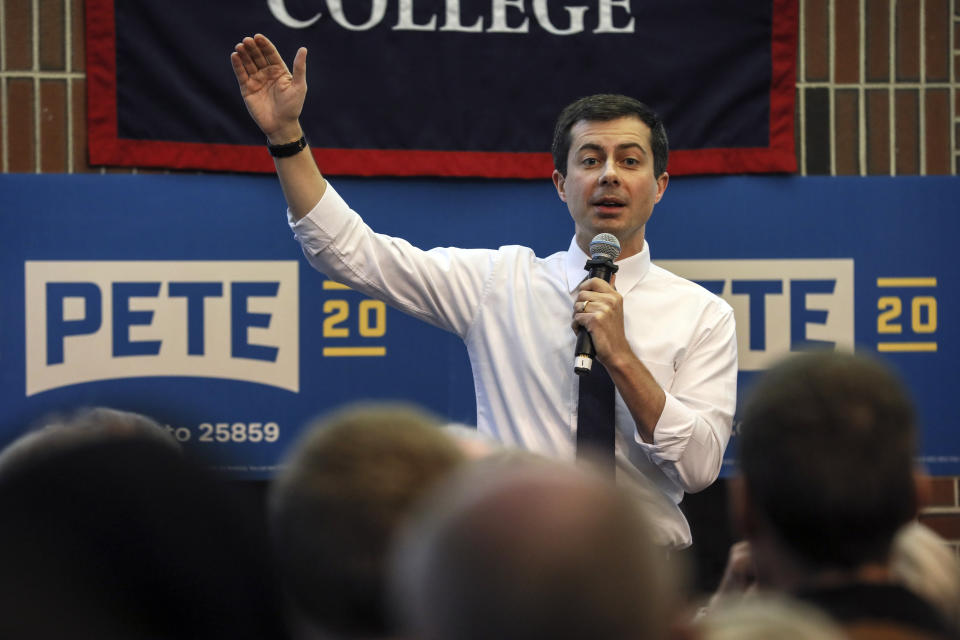The Democrats’ 3 best ideas
I’ve already teed off on the 3 worst ideas among Democrats running for president: Medicare for all, a fracking ban, and border amnesty. With that out of the way, here are the 3 best ideas emerging from the Democratic presidential campaign:
Medicare for more. Forget Medicare for all, a giant government health plan for everybody that would eliminate private insurance. It would be prohibitively expensive and politically impossible, and massively disrupt the existing health care system. But there are still urgent problems in the U.S. health care system: exorbitant costs, spotty coverage and 30 million Americans who don’t have coverage.
Joe Biden, Pete Buttigieg, Amy Klobuchar and some other Democrats favor a new “public option” that would be a last-resort insurance program for people under the age of 65 who can’t get affordable coverage through an employer or some other way. It would leave private insurance in place while setting up a new government plan similar to Medicare. Enrollees would pay premiums, but enjoy the purchasing power of a huge pool of patients. So costs would be lower for many. There’d be subsidies for lower-income folks, as there are in the Affordable Care Act. There would also be more help for middle-income families that don’t qualify for ACA subsidies.
A public option wouldn’t be cheap and it wouldn’t solve every problem. Joe Biden’s plan, for example, would cost at least $70 billion per year, which Biden wants to pay for by reversing some of the 2017 Trump tax cuts. That’s a lot, but it’s only 4% of the cost of Medicare for all, which Elizabeth Warren and Bernie Sanders favor. And on its own, a public option wouldn’t necessarily lower overall costs or out-of-pocket expenses for some people covered by private insurance. It would, however, bring the United States close to universal coverage, with nearly everybody who wants it having some kind of insurance. The next move would be tackling costs.

A carbon tax. Warren and Sanders want to address global warming with aggressive government intervention into the energy and transportation sectors of the U.S. economy. The government would fund vast new research efforts into clean energy, ban some oil and gas drilling, set quotas and deadlines on certain types of energy consumption and perhaps even take over the electrical grid. These are not things the government is good at. Better to set powerful incentives for private markets to innovate solutions to the problem.
That’s what a carbon tax would do, which is why famed economists such as Janet Yellin, Ben Bernanke and Alan Greenspan favor the idea. South Bend, Ind., Mayor Pete Buttigieg puts a carbon tax at the center of his climate plan, with Biden, Klobuchar and Warren warm to the idea as well. A well-designed tax on carbon pollution would increase every year on a schedule transparent to everybody, making future costs predictable. As carbon got more expensive, the incentive to switch to non-carbon forms of energy—and invent new forms—would grow stronger. Similar market-based incentives helped solve the acid-rain problem in the 1990s, working better than many expected.
A carbon tax is a tough sell because it raises costs for consumers. But it also raises revenue for the government. So one way to ease the bite is to rebate money raised through a carbon tax back to consumers in the form of some other tax break. It’s hard to make every taxpayer exactly whole, but rebating the tax would reduce opposition to it and make it more palatable politically.
Universal child care and pre-K. Elizabeth Warren is pushing hardest for these programs, which would make life easier for working parents and better prepare young kids for successful schooling. Her plan would cost around $144 billion per year for both, which even in Washington is a lot of money. But economists say universal child care and pre-kindergarten programs would probably pay for themselves economically, as more parents choose to work and young people emerge from school better prepared for the workplace.
Some lucky families can easily afford child care, and many middle- and upper-class families already send their 3- and 4-year-olds to nursery schools or other pre-K programs, which can easily run $10,000 a year or more. Extending such access to more people, especially in lower-income communities, would incentivize work while helping kids. Free programs for everybody might be a stretch, but even small amounts of aid can be a big benefit for stressed parents on tight budgets.
Rick Newman is the author of four books, including “Rebounders: How Winners Pivot from Setback to Success.” Follow him on Twitter: @rickjnewman. Confidential tip line: rickjnewman@yahoo.com. Encrypted communication available. Click here to get Rick’s stories by email.
Read more:
Read the latest financial and business news from Yahoo Finance
Follow Yahoo Finance on Twitter, Facebook, Instagram, Flipboard, SmartNews, LinkedIn, YouTube, and reddit.

